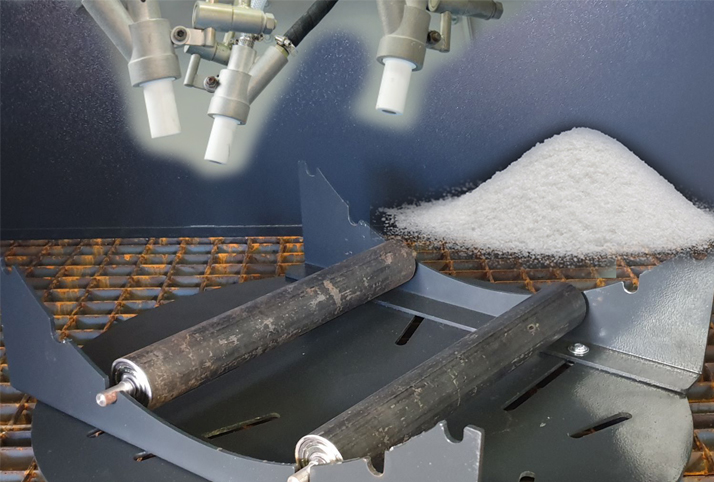
Abrasive firing is the general term applied to finishing processes that number the high- pressure propulsion of a sluice of abrasive material onto the face of a workpiece. Abrasive firing can serve numerous face finishing purposes, similar as removing pollutants or former coatings, altering the shape and smoothing or planing the face.
There are multitudinous types of abrasive blasting operations, each of which requires the use of different types of blasting paraphernalia, appertained to as blasting “ media. ” A conventional “ dry ” sandblasting process that uses traditional sand is not recommended for utmost operations. Blasting with sand generally requires twice the amount of material, making it cost- prohibitive for multitudinous companies. the process of ‘ sandblasting ’ is generally conducted exercising necessary types of abrasive material
Glass Beads: Glass isn’t as aggressive a firing media as other accoutrements , similar as sword shot or silicon carbide. still, it’s an excellent choice for operations that bear a softer, brighter finish. It’s well suited for pristine sword operations. Glass Beads can also be reclaimed multiple times.
Aluminum oxide is characterized by its superior hardness and strength. It can be set up in operations ranging fromanti-slip shells, artificial operations as a firing media, and as a raw material in refractories. Aluminum oxide is designed for abrasive pressure firing of nearly any type of substrate glass, determinedness, marble, and sword.
Silicon carbide is the hardest abrasive firing material available, making it the stylish choice for your most grueling face finishing operations. It’s available in colorful colors and immaculacy. Its primary use ranges from clicked abrasive tools, imbrication, polishing, glass drawing and general- purpose heavy- duty blast slice operations.
Walnut shell abrasive is a hard naturally being material made from crushed walnut shells. It’s the harder of the soft abrasives, available in a variety of sizes for blast cleaning and polishing softer shells that could dodge damage from harsher abrasives. Typical operations include polishing of soft essence, fiberglass, wood, plastic and gravestone. It can also be used in tumbling operations for polishing gems and jewelry.
Corn cob abrasive is a grainy abrasive manufactured from crushing the thick woody ring of a sludge cob into colorful fortitude sizes. It’s the softer of the naturally being abrasives making it ideal for drawing, deburring, grinding andde-flashing operations. Common diligence include jewelry, chopstick, machine corridor, fiberglass and the junking of graffiti or debris from wood, slipup or gravestone.
